Geography Test Yourself
Here's a really quick way of testing if you've learned the meanings of the key words in this section.
Look at the key word on the card and see if you can remember its definition.
If you get stuck, you can be shown the mnemonic to reveal an image that should help you remember.
To check if you're right, or remind you if you've forgotten, press the card to flip it.
Go through the whole list to see how many definitions you can recall.
Revisit any that you had difficulty remembering until you're confident you can
recall all of them.
Moraine
Frost-shattered rock debris and material eroded from a valley's floor and sides, transported and deposited by glaciers
Moraine – Frost-shattered rock debris and material eroded from a valley's floor and sides, transported and deposited by glaciers
(Pronounced muh-reyn)

Not more terrain (moraine) to shift! I'm fed up with having to move and deposit large pieces of rock.
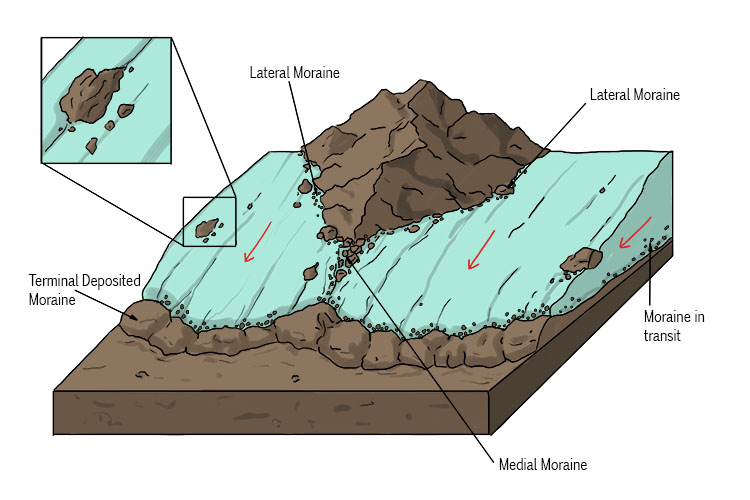
A moraine is an accumulation of loose (unconsolidated) debris – dirt and pieces of rock – that is carried along by a glacier and deposited at some point during the glacier's journey. There are three main types of moraine:
Lateral moraine
Material that is deposited along both sides of the glacier, usually comprising weathered material that has fallen from the valley sides.
Medial moraine
This type is made up of material deposited in the middle of a glacier that has been formed by the merging of two glaciers. The lateral moraines of the two glaciers are brought together as the glaciers merge into one (see diagram above).
Terminal moraine
Material that is deposited at the front end of the glacier.
Outwash
Material, chiefly sand, gravel and clay, deposited by meltwater streams in front of and underneath a glacier
Outwash – Material, chiefly sand, gravel and clay, deposited by meltwater streams in front of and underneath a glacier
NOTE 1:
The material is sorted and rounded by the water action.
NOTE 2:
Meltwater is water released by the melting snow or ice including glacial ice.

"Out of my washing (outwash) machine now! You shouldn't put sand and gravel in it."

Glacial outwash is the sand, gravel and other materials deposited by running meltwater – that is, the water leaving the glacier as temperature rises. Heavier particles of sand and gravel are deposited in the glaciated valley. The individual gravel stones are smoothed and rounded by their journey. Lighter, finer particles – for instance, clay – are transported further away from the glacier and deposited in what is known as the outwash plain.
Plucking
A type of erosion where melted water in a glacier freezes onto rocks and as the ice moves forward it plucks out large pieces along the rock joints
Plucking – A type of erosion where melted water in a glacier freezes onto rocks and as the ice moves forward it plucks out large pieces along the rock joints

Plucking out an eyebrow hair is just the same as plucking in geography. It will come out eventually if it's pulled hard enough.
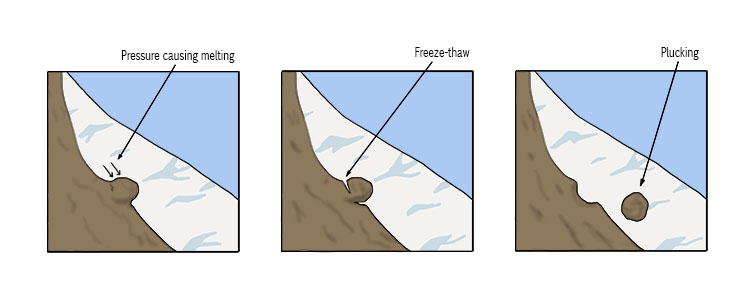
Plucking happens when rocks and stones that have been frozen to the base or sides of the glacier are plucked from the ground or rock face as the glacier moves. The rock that is plucked has often been weakened by long periods of freeze-thaw weathering and abrasion.
Pyramidal Peak
Where several corries are formed on a single mountain, the mountain takes the form of a steep pyramid
Pyramidal Peak – Where several corries are formed on a single mountain, the mountain takes the form of a steep pyramid
(Pronounced pih-rah-mid-el peek)

A pyramid in the middle of the corridor was wearing a peak cap (pyramidal peak where corries meet).
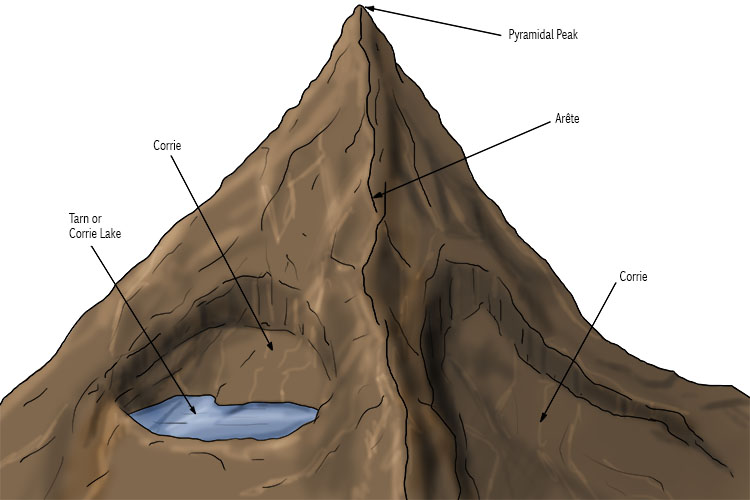
A pyramidal peak is formed where three or more corries meet.
The glaciers carve away at the top of the mountain and this results in a sharply-pointed summit.
Pyramidal peaks include Mount Everest and the Matterhorn. An example of a pyramidal peak in the UK is Mount Snowdon in North Wales.
Ribbon Lake
Lakes shaped like a finger (long and narrow)
Ribbon Lake – Ribbon Lakes are shaped like a finger (long and narrow)
NOTE:
A ribbon lake is a long, narrow lake found in glacial valleys. They are formed in locations where the glacier moved over soft rock. Harder rock higher up the valley is left relatively untouched, so ribbon lakes form in the bottom where soft rock has been eroded by the glacier.

The ribbon was decorated with pictures of lakes (ribbon lake) and wrapped around her finger (to remind her that ribbon lakes are finger-shaped). She even left the ribbon on when she played soft rock (to again remind herself that ribbon lakes form on soft rock).


Glaciers move over both hard and soft rock as they gouge out valleys. Softer rock is less resistant to erosion, so the glacier will carve it out more deeply.
When the glacier retreats, water collects in these deeper areas, creating long, thin bodies of water called ribbon lakes.
Many of the lakes in Britain's Lake District are ribbon lakes. Windermere is a prime example.
Rotational Slip
Glacial ice moving in a circular motion. It can help to make hollows in the landscape, deepening them into bowl shapes
Rotational Slip – glacial ice moving in a circular motion. It can help to make hollows in the landscape, deepening them into bowl shapes

She was rotating on slippers (rotational slip) made of ice. No wonder she moved so fast in a circular motion.

As a glacier gets heavier, it begins to move downhill. Fed from the top, the glacier moves out of the hollow in a semi-circular motion, as illustrated above. This is called rotational slip.
It makes the hollow deeper by eroding the rock at the bottom of the hollow. Where the ice leaves this "bowl", it leaves behind rock fragments which eventually form a lip.
Till
An unsorted mixture of sand, clay and boulders carried by a glacier and deposited as ground moraine over a large area
Till – An unsorted mixture of sand, clay and boulders carried by a glacier and deposited as ground moraine over a large area
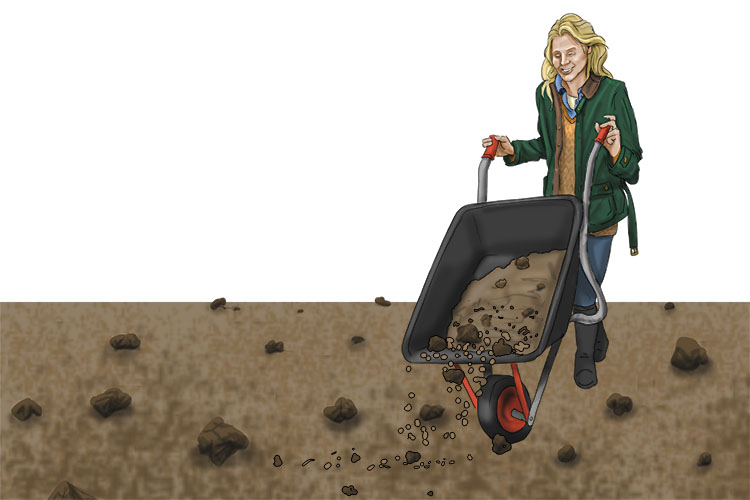
If you tilt (till) out all the sand, clay and boulders over a large area it looks like ground moraine.

Till is material deposited by glacial ice over wide areas. It is sometimes called boulder clay because it is mostly made up of clay and boulders, or a mixture of these.
Till comes from the erosion of material caused by the movement of a glacier. It forms lateral, medial and terminal ground moraines.
Truncated Spur
Found in between hanging valleys and is the inverted "v" shape where the former tributary valleys have been sliced off by a lower valley glacier
Truncated Spur – Found in between hanging valleys and is the inverted "v" shape where the former tributary valleys have been sliced off by a lower valley glacier

His trunk was hated by the mountain guides who had to carry it but they were spurred (truncated spur) on up between the hanging valleys by the big tip he gave them.

Where large glaciers moved along like very slow, massive bulldozers, cutting through landscapes, they occasionally crossed the paths of existing valleys.
Where this happened, a glacier would cut through the hills either side of the existing valley.
This action cut off, or truncated, the “spurs” – the ridges either side of the existing valley – leaving a distinctive, upside-down V-shape where the ridges were cut away.
Brownfield site
Urban land that has been used, abandoned and now awaits some new use. Commonly found in the inner cities
Brownfield site – Urban land that has been used, abandoned and now awaits some new use. Commonly found in the inner cities
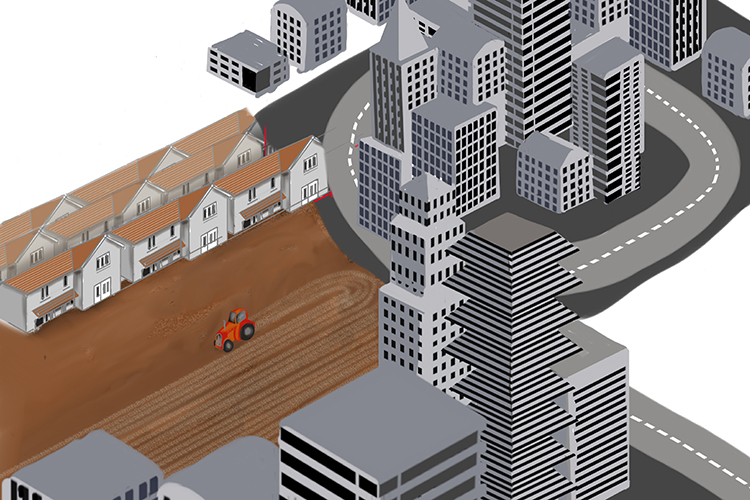
There was a brown field (brownfield) that used to have buildings on it in the middle of the inner city.

A brownfield site is an area of land that has previously been developed, usually for industrial purposes, but is now unused.
Such sites are usually in urban areas but can be in the countryside.
Brownfield sites are often used for new housing, but there can be challenges. Sites like these are often polluted due to their previous industrial use and the cost of cleaning them up can be high.
Carbon Footprint
A measure of all the greenhouse gases we individually produce, through burning fossil fuels and refrigerant gases expressed as tonnes. A single carbon footprint is one tonne of CO2 per year
Carbon Footprint – A measure of all the greenhouse gases we individually produce, through burning fossil fuels and refrigerant gases expressed as tonnes. A single carbon footprint is one tonne of CO2 per year

On a car bonnet, a huge foot left a print (carbon footprint). They weighed the foot afterwards, it was one tonne. Making the foot green reminds you too that it is all about greenhouse gases.
A SINGLE CARBON FOOTPRINT = 1 tonne of CO2 per year.
A bit of research shows that "a single carbon footprint" (in the sense of one person's carbon footprint) is most unlikely to be one tonne. Individual carbon footprints vary enormously - many tonnes in the US and generally very small in undeveloped countries. Bear in mind the term "carbon footprint" includes other gases such as methane, so, not just CO2.

2016
United Kingdom = 5.6 Tonnes of CO2 per person per year
United States = 15 tonnes of CO2 per person per year
- A carbon footprint includes all the different greenhouse gases that contribute to global warming, CO2, methane, nitrous oxide and refrigerant gases.
- Carbon dioxide is produced when we burn fossil fuels for electricity and transport.
- In 2016, the world average was 4 tonnes of CO2 per person per year released into the atmosphere.
- In 2019, 15 countries were responsible for almost three-quarters of the worlds carbon emissions.
- In 2017, China was responsible for 27.2% of all the world's carbon emissions.
The Greenhouse Effect
Solar radiation heats up the earth's surface and is emitted back into the atmosphere as infrared radiation. Carbon dioxide is transparent to solar radiation and yet absorbs solar radiation, thus, the presence of carbon dioxide in our atmosphere allows sunshine to penetrate to the surface but inhibits the emission of infrared radiation to space. This warms up the atmosphere and is known as the greenhouse effect.

CO2 and other greenhouse gases trap heat in the Earth's atmosphere.
Dereliction
Abandoned buildings and wasteland
Dereliction – abandoned buildings and wasteland

Dare I say this needs a lick of paint and a little attention (dereliction). She said it as a joke because it was a wreck and completely abandoned.
Derelict buildings are fairly commonplace in large towns and cities. Many such buildings were once part of a strong manufacturing industry which has now fallen into decline.
Some derelict sites can be turned into attractions such as museums and even shopping and leisure centres, but others require complete demolition and removal, creating brownfield sites for future developments.
Economic Opportunities
Chances for people to improve their standard of living through employment
Economic Opportunity – Chances for people to improve their standard of living through employment

The economy size was comical but it did give us an opportunity (economic opportunity) to sell soap at a profit so we could earn money to improve our standard of living.
Economic opportunity means providing an equal chance for people to earn a living wage.
To achieve a situation in which people have this kind of opportunity, governments must ensure adequate education and training, rights for workers and an economic climate in which legitimate businesses can grow.
They must also make sure there is no discrimination or favouritism when employment is offered.
Healthcare services are also needed to ensure the working population stays fit, and a welfare system is vital for those who are unable to work.
Greenfield site
A plot of land often in the countryside or on the edge of an urban area, that has not yet been built on
Greenfield site – A plot of land often in the countryside or on the edge of an urban area, that has not yet been built on

There is a green field (greenfield) on the edge of the city not yet built on.
As a greenfield site hasn’t been developed previously, little site clearance is required.
There are no buildings to demolish and no industrial roads or debris to remove.
So, a greenfield site provides a blank canvas – but there are drawbacks. Development of such sites results in the loss of countryside and wildlife habitats.
Pressure groups have been set up to protect greenfield sites. For instance, in England, the CPRE (Campaign to Protect Rural England) lobbies for less use of greenfield sites for future development.
Integrated Transport Systems
When different transport methods connect, making journeys smoother and therefore public transport more appealing
Integrated Transport Systems – When different transport methods connect, making journeys smoother and therefore public transport more appealing

What you need to do is get into a great transport system (integrated transport system) which connects easily as above.
Better integration should result in more demand for public transport, with people switching from private cars. This would be more sustainable and could reduce road congestion.

Is the age of the car dead?
In the UK. The Campaign for Better Transport claims that despite “in-principle” support and a number of small national initiatives, there has been a general failure to link transport networks and modes.
It adds that the resulting over-reliance on cars raises social, economic and environmental issues. These unfairly disadvantage people without cars and lead to high spending on the prevention of congestion.
Inequalities
Differences between poverty and wealth, as well as peoples' wellbeing and access to things like jobs, housing and education
Inequalities – Differences between poverty and wealth, as well as peoples' wellbeing and access to things like jobs, housing and education
Inequalities may occur in housing provision, access to services, access to open land, and safety and security.

In no way are these equal in quality (inequality). The difference in the two places shows massive contrasts in wealth, housing and wellbeing.
Standards of living can vary from family to family, from one part of a country to the other, and from one country to another. The differences can be economic – differing levels of wealth and income – and political – different rights and freedoms – as well as in many other areas, such as access to healthcare or education.
While it might be impossible to have a completely equal global society, there is concern that the degree of inequality is growing both within and between countries.
There is evidence that everyone is likely to benefit from societies being more equal, not just the world’s poorest people. For example, a more unequal society is less healthy for everyone within it, regardless of their status.
Megacity
An urban area with a total population in excess of ten million people
Megacities – An urban area with a total population in excess of ten million people
NOTE: We link the number 10, which we have to remember here, with ten pin bowling.

There is a mega star in the city (megacity) who can take out ten people (ten million) at once.
There are more than 30 megacities in the world. China has the most megacities, with five: Shanghai, Beijing, Guangzhou, Shenzhen, and Tianjin.
The Japanese capital, Tokyo, is the largest megacity by population with 37,800,000 people.
The very high population levels in megacities can lead to major problems such as insufficient food supplies, shortages of drinking water and shortcomings in power supplies.
There may also be concerns about sanitation and disposal of sewage and waste.
Some cities have insufficient living space for incoming residents, which may lead to an increase in informal settlements and slums.
Residents travel around by bus, truck or motorised bicycle, causing chaos on the streets and high levels of CO2 emissions.
On the plus side, megacities have the potential to reduce poverty and improve living conditions for a large proportion of the population if they are managed properly and make the most of their advantages.
Migration
When people move from one area to another. In many low-income countries (LICS) people move from rural to urban areas (rural-urban migration)
Migration – When people move from one area to another. In many low-income countries (LICS) people move from rural to urban areas (rural-urban migration)

The birds migrate, but people can migrate too. He was so heavy he could only manage to go from his country house (rural) to the city (urban).

Push: The factors that cause migration include fewer and/or poor services such as education and healthcare; lack of job opportunities; poor transport; and low wages for those who do have jobs.
Pull: The factors that pull people towards migration include better services; more job opportunities; better transport; and higher wages (although probably with a higher cost of living).
Migration means the movement of people from one place to another. This movement changes the population of places – for instance. cities become more heavily populated while rural populations get smaller. This can have major effects on the number of services and facilities available in an area.
International migration is the movement of people from one country to another.
People who leave their country are said to emigrate; people who move into another country are called immigrants; and the movement of people into a country is called immigration.
Natural Increase
The difference between the number of births and the number of deaths in a population over a given period
Natural Increase – The difference between the number of births and the number of deaths in a population over a given period
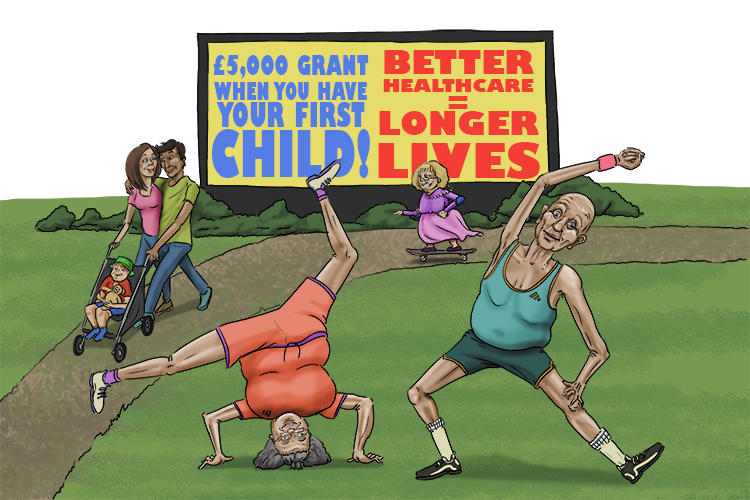
It was natural that there was an increase (natural increase) in the population because more couples were having babies and fewer people were dying.
The rate of natural increase in developed countries is quite low, ranging from about 1% down to slightly negative figures. In developing countries, the rate is generally higher. The fact that most population growth is concentrated in poorer countries presents a range of problems, from food shortages to inadequate housing, education and healthcare.
In 2020 the global population was growing at a rate of around 1.05% per year (down from 1.08% in 2019, 1.10% in 2018, and 1.12% in 2017). The average population increase was estimated at 81 million people per year.
The annual global growth rate reached its peak in the late 1960s when it averaged around 2%. The rate has nearly halved since then and is expected to continue to decline in the coming years.
Pollution
The presence of chemicals, noise, dirt or other substances which have harmful or poisonous effects on an environment
Pollution – The presence of chemicals, noise, dirt or other substances which have harmful or poisonous effects on an environment
We all know what pollution is but remember it includes:

Dirty air (polluted air) from factories, diesel, construction dust and crop burning that cause lung cancer, heart disease and chest problems.
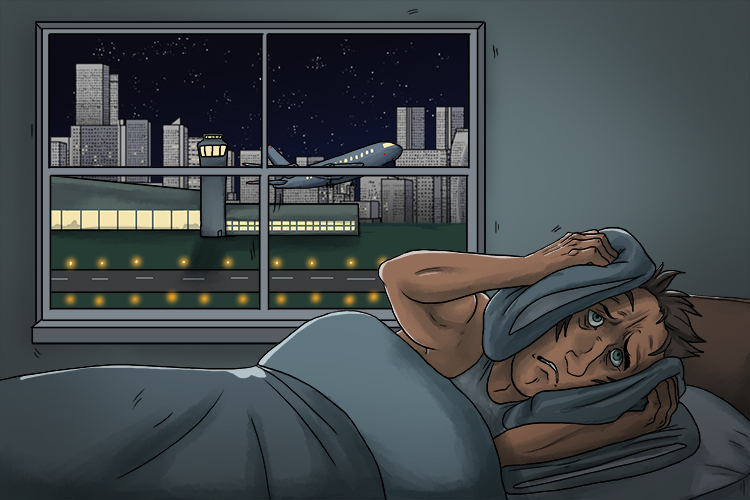
Noise pollution that cause hearing loss, sleep disturbance and noise annoyance.

Plastics pollution. Much of the planets oceans are swimming in discarded plastic that kill sea animals by suffocation. Micro plastics (less than 5mm in diameter) are being ingested by animals and entering human food cycles.

Chemical pollution. The run off from crop fertilisation can get into rivers and the nutrients (nitrogen and phosphorus) will cause excessive algae growth and reduce oxygen levels for fish.
Many countries have introduced laws to try to cut down on avoidable pollution and to encourage industries that are more sustainable. The laws are policed by environment agencies and enforced by the courts.
Pollution is broken down into two categories: primary and secondary.
Primary pollution is when people directly contaminate the earth. Examples of this are mercury, sulfur, and even carbon dioxide.
Secondary pollution is when one primary pollutant reacts with another, as well as with sunlight and water, to create a different pollutant. As an example, sulfur dioxide is a primary pollutant, but when it reacts with rain it becomes a secondary pollutant called acid rain.
Recycling Waste
The reprocessing of items into new raw materials
Recycling Waste – The reprocessing of items into new raw materials

He kept repeating the cycle (recycle) ride until he felt like a new man. His bum was a bit raw so he replaced the seat with new material (new raw material).
Recycling involves a process in which items no longer required are made into new materials. This processing requires energy and, possibly, the addition of some new material. This means that while recycling is better than making something entirely from new material, it still produces CO2 and can contribute towards depletion of resources.
Compare this with reusing, which maintains the "embodied energy" initially used to produce an object and requires no processing or new materials.





































